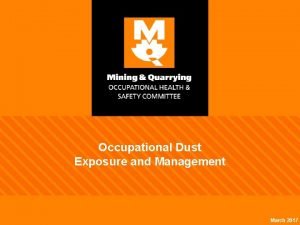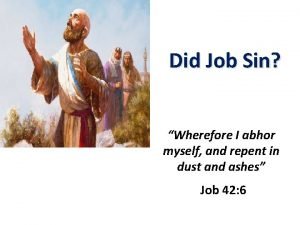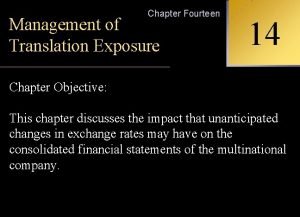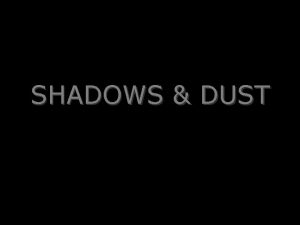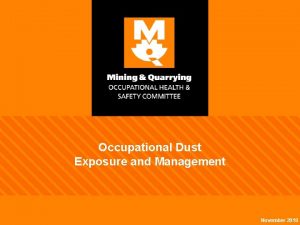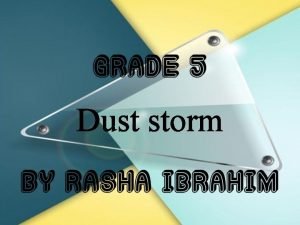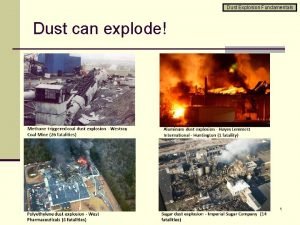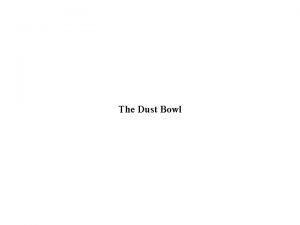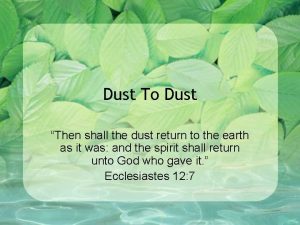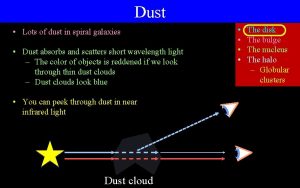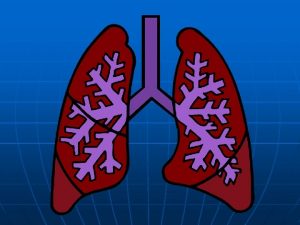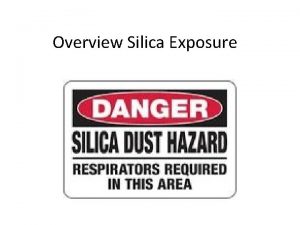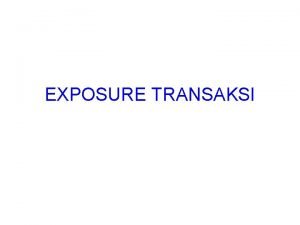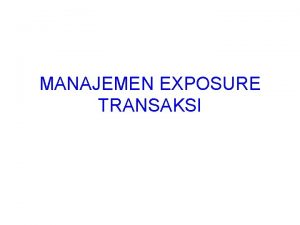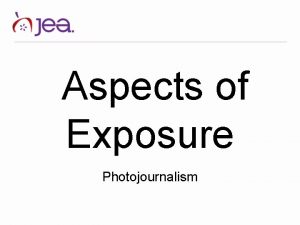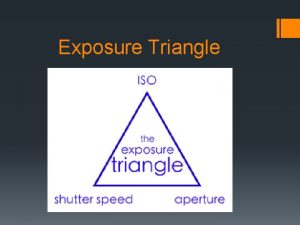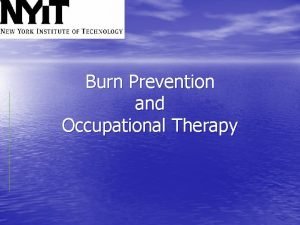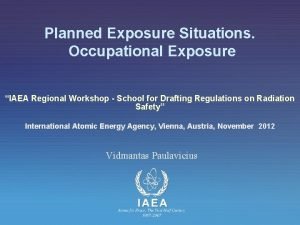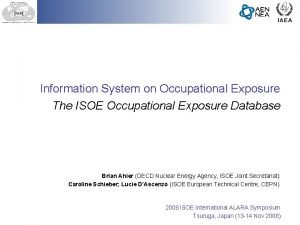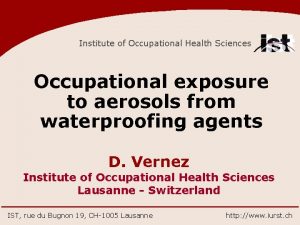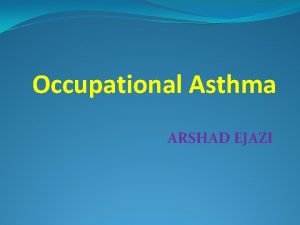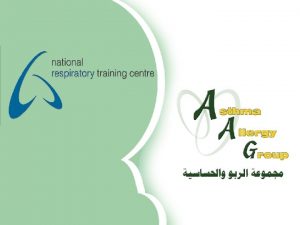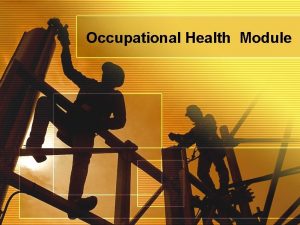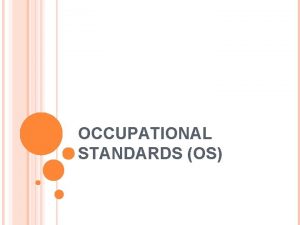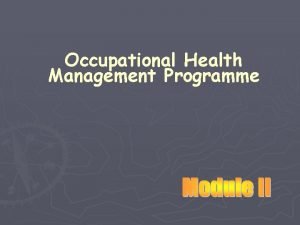Occupational Dust Exposure and Management March 2017 The



































- Slides: 35

Occupational Dust Exposure and Management March 2017

The Mining and Quarrying Occupational Health and Safety Committee § The Mining and Quarrying Occupational Health and Safety Committee is a tripartite Committee established under the South Australian Occupational Health, Safety and Welfare Act 1986 (SA) and continues existence under the Work Health and Safety Act 2012 (SA). § The Committees mandate is to protect workers, promote best hygiene practices, support workplace health and safety and prevent injury, death and disease within the mining and quarrying sectors. § This workplace industry safety resource is developed and fully funded by the Mining and Quarrying Occupational Health and Safety Committee (MAQOHSC). 2

Disclaimer 3 § IMPORTANT: The information in this presentation is of a general nature, and should not be relied upon as individual professional advice. If necessary, legal advice should be obtained from a legal practitioner with expertise in the field of Work Health and Safety law in South Australia. § Although every effort has been made to ensure that the information in this presentation is complete, current and accurate, the Mining and Quarrying Occupational Health and Safety Committee, any agent, author, contributor or the South Australian Government, does not guarantee that it is so, and the Committee accepts no responsibility for any loss, damage or personal injury that may result from the use of any material which is not complete, current and accurate. § Users should always verify historical material by making and relying upon their own separate inquiries prior to making any important decisions or taking any action on the basis of this information.

Overview 4 § Dust Exposure § Silicosis § Respirable Silica Dust § How Silica Can Affect the Lungs § Onset of Silicosis § Contributing Factors § Dust Management § Legislative Requirements § Practicable Dust Control Measures § MAQOHSC 2017 – 2018 Dust Monitoring Program

Introduction Dust is a recognised hazard for workers in the mining and quarrying sector. The generation of dust particles are a common occurrence associated with mining and quarrying activities. Dust is generated by the breaking down of a solid mineral mass to a size where the particles are small enough to become airborne. 5

Dust Exposure to occupational dust in the workplace occurs through the breathing in of dust particles generated from work related activities, such as; 6 § Traffic on Access & Haul Roads § Drilling & Blasting Activities § Load and Haul § Sales Trucks § Crushing & Screening Processes § Stockpiling Materials § Maintenance Activities § Weather Conditions

Dust Exposure The response of the respiratory system from exposure to occupational dust and the health effects it can have on the body, depends on the makeup and structure of the dust particles. Without proper safety precautions, occupational dust exposure can lead to occupational dust related lung diseases, such as silicosis. 7

Respirable Silica Dust Silica is, silicon dioxide, a naturally occurring widely abundant mineral that forms the major component of most rocks and soils on earth. 8

Respirable Silica Dust Silica (silicon dioxide) - Quartz • Very abundant, includes sandstone, marble, slate, granite and metallic ores, main constituent of sand. Quartz Percentage • Granite contains 25 per cent to 40 per cent quartz, • Shales average 22 per cent quartz, and • Sandstones average 67 per cent quartz. 9

Respirable Silica Dust Respirable Dust - less than 10 microns in diameter Dust particles that are able to breathed in and cause disease, are known as ‘respirable’: § Small enough in size to gain access to the deeper, pulmonary areas of the lungs, unable to be cleared by coughing or mucous § Bodies defence mechanisms engulf the dust particles releasing chemicals which can lead to fibrosis and nodular lesions “Freshly broken” silica particles are more potent than weathered particles! 10

Respirable Silica Dust 11

Respirable Silica Dust 12

How Silica can Effect the Lungs 13

Silicosis 14 § Silicosis is the most common occupational lung disease worldwide; Silicosis resulted in 46, 000 deaths globally in 2013 although down from 55, 000 deaths in 1990. § Respirable Crystalline Silica (RCS) is now known to cause chronic obstructive pulmonary disease (COPD). § Obstructive lung disease prevents a persons proper breathing and includes chronic bronchitis and emphysema. § Respirable crystalline silica (RCS) remains an important risk factor for respiratory diseases and silicosis.

Onset of Silicosis There are four classifications for the onset of silicosis, these are: § Chronic, § Accelerated, § Complicated, and § Acute. 15

Onset of Silicosis Chronic simple silicosis develops from long-term exposure (10 years or more) to relatively low concentrations of silica dust. Symptoms and diagnosis develops 10– 30 years after first exposure. Chronic simple silicosis is the highest diagnosed classification within all types of silicosis. Workers with this type of silicosis, especially early on, may not have obvious signs or symptoms of disease, but abnormalities may be detected by x-ray. 16 Chronic cough and shortness of breath are common findings.

Onset of Silicosis Accelerated silicosis develops 5– 10 years after first exposure to higher concentrations of silica dust. Symptoms and x-ray findings are similar to chronic simple silicosis, but occur earlier and tend to progress more rapidly. Workers diagnosed with accelerated silicosis are at greater risk for complicated silicosis disease, including progressive massive fibrosis (PMF). 17

Onset of Silicosis Complicated Silicosis can become “complicated” by the development of severe scaring, where the small nodules of the lungs gradually become confluent (merge together). Progressive massive fibrosis (PMF) is associated with more severe symptoms and respiratory impairment. Silicosis can also be complicated by other lung diseases, such as tuberculosis, fungal infections and lung cancer. Complicated silicosis is more common with accelerated silicosis than with the chronic variety. 18

Onset of Silicosis Acute Silicosis that develops a few weeks to 5 years after exposure to high concentrations of respirable crystalline silica dust. Symptoms of acute silicosis include more rapid onset of severe disabling shortness of breath, cough, weakness, and weight loss, often leading to death. Silicosis can be associated with the development of lung cancer (IARC Group 1 carcinogen, 1997) 19

Contributing Factors Smoking is one of the most common factors that can significantly increase the risk of contracting or exacerbate a respiratory disease condition. Smoking and exposure to Crystalline Silica DOES NOT mean: 1 + 1 = 2 times the risk of contracting a lung disease, The ratio is much higher: 1 + 1 = 50 times the risk of contracting a lung disease 20

Dust Management Strategies 21

Legislative Requirements Aside from the Primary Duty of Care under the South Australian WHS Act 2012, there are numerous requirements under the South Australian WHS Regulations 2012, in relation to dust monitoring, dust management and health monitoring. Please see the included hand out for an extract of the legislative requirements. 22

Hierarchy of Control Elimination remove the hazard from the workplace Substitution Eliminates or Controls the Hazard or Risks use a different (safer) process, machine or chemical Isolate as much as possible, isolate the hazard or hazardous work practice from people Engineering install guards on machines, put in barriers around hazards Relies on the person working with the hazards / risks ‘doing the right thing’ 23 Administrative use policies, training & signs to warn workers PPE

Practical Dust Control Measures § Use strategically placed water or foam sprays to supress dust generation (can be automated) § Enclose chutes and tip points to prevent dust escaping § Use wetting agents on haul roads and stockpiles 24

Practical Dust Control Measures Enclosed Discharge Points 25 Jaw Sprays

Practical Dust Control Measures § Pressurised / filtered cabins and control rooms § Ensuring dust filters and ventilation systems are regularly maintained 26

Practical Dust Control Measures Fugitive Dust Sprays Chemical – Spray On 27 Water – Fan Forced

Practical Dust Control Measures § Use vacuum systems rather than dry sweep § Ensure good housekeeping to prevent build up of spilt material that can become airborne § Use appropriate Personal Protective Equipment 28

Practical Dust Control Measures § Personnel are clean shaven to ensure effective seal of respirators § Inspection and testing of cabin doors and window seals § Keep doors and windows closed § Vacuuming of cabins instead of sweeping or air blowing § Wiping instrument panels and controls with damp cloth § Reporting any leaks or damage where dust can penetrate into a sealed cabin § Replace disposable respirators regularly or when contaminated 29 § Cleaning clothes down using a brush rather than compressed air

MAQOHSC Dust Monitoring Program Mining and Quarrying Occupational Health and Safety Committee (MAQOHSC) plays a major role in the investigation of dust-related illnesses. MAQOHSC supports and educates the mining and quarrying industry of South Australia in understanding the risks of dust exposure as well as demonstrating methods to mitigate and reduce such risks. Greencap was commissioned by the MAQOHSC to undertake dust monitoring with over 75 South Australian mine and quarry stakeholders as part of the Health Surveillance - Dust Monitoring Program for 2017 -2018. 30

MAQOHSC Dust Monitoring Program Static and personal respirable dust and environmental noise monitoring has been conducted at those sites. The objectives of the Program is to: § Assess whether workers are exposed to respirable dust and respirable quartz dust at concentrations that may lead to an adverse risk to health based on current exposure standards. § Determine the noise levels within the crushing and screening plants and compare them with the noise exposure standards as defined by the Work Health and Safety Regulations 2012 (SA). 31

MAQOHSC Dust Monitoring Program MAQOHSC will then provide the stakeholder with a report summary identifying any areas of concern and work with stakeholders on ways to further reduce the risk of worker exposure to respirable crystalline silica dust. MAQOHSC’s 2017 - 2018 dust monitoring program is intended to provide additional supporting data to long-term monitoring programs undertaken in the mining and quarrying industry of South Australia. 32

Questions ? ? ? ? ? 33

Further Information MAQOHSC Work Health and Safety Specialists are available to provide further advice and assistance on all Work Health and Safety matters. MAQOHSC Work Health and Safety Specialists are able to be contacted via our website at www. maqohsc. sa. gov. au or email maqohsc@sa. gov. au. Work Health and Safety Legislation, Codes of Practice, fact sheets, Health and Safety Representatives (HSR) information and guides can be found at the following websites: Safe. Work SA – www. safework. sa. gov. au or call 1300 365 255 Safe Work Australia – www. safeworkaustralia. gov. au or call 1300 551 832 34

Creative Commons This creative commons licence allows you to copy, communicate and or adapt our work for non-commercial purposes only, as long as you attribute the work to Mining and Quarrying Occupational Health and Safety Committee and abide by all the other licence terms therein. ISBN 978 -1 -925361 -34 -6 35
 Managing economic exposure and translation exposure
Managing economic exposure and translation exposure What is economic exposure?
What is economic exposure? Managing economic exposure and translation exposure
Managing economic exposure and translation exposure Where is silica dust found
Where is silica dust found Anthem of poland
Anthem of poland Operating exposure
Operating exposure Abhor sin
Abhor sin Various techniques of managing translation exposure
Various techniques of managing translation exposure Management of transaction exposure
Management of transaction exposure Techniques of transaction exposure management
Techniques of transaction exposure management Rp tsade
Rp tsade Used to lay out any noncircular curve
Used to lay out any noncircular curve Hình ảnh bộ gõ cơ thể búng tay
Hình ảnh bộ gõ cơ thể búng tay Slidetodoc
Slidetodoc Bổ thể
Bổ thể Tỉ lệ cơ thể trẻ em
Tỉ lệ cơ thể trẻ em Chó sói
Chó sói Thang điểm glasgow
Thang điểm glasgow Chúa sống lại
Chúa sống lại Môn thể thao bắt đầu bằng từ đua
Môn thể thao bắt đầu bằng từ đua Thế nào là hệ số cao nhất
Thế nào là hệ số cao nhất Các châu lục và đại dương trên thế giới
Các châu lục và đại dương trên thế giới Công thức tính thế năng
Công thức tính thế năng Trời xanh đây là của chúng ta thể thơ
Trời xanh đây là của chúng ta thể thơ Mật thư tọa độ 5x5
Mật thư tọa độ 5x5 101012 bằng
101012 bằng độ dài liên kết
độ dài liên kết Các châu lục và đại dương trên thế giới
Các châu lục và đại dương trên thế giới Thơ thất ngôn tứ tuyệt đường luật
Thơ thất ngôn tứ tuyệt đường luật Quá trình desamine hóa có thể tạo ra
Quá trình desamine hóa có thể tạo ra Một số thể thơ truyền thống
Một số thể thơ truyền thống Cái miệng bé xinh thế chỉ nói điều hay thôi
Cái miệng bé xinh thế chỉ nói điều hay thôi Vẽ hình chiếu vuông góc của vật thể sau
Vẽ hình chiếu vuông góc của vật thể sau Thế nào là sự mỏi cơ
Thế nào là sự mỏi cơ đặc điểm cơ thể của người tối cổ
đặc điểm cơ thể của người tối cổ Thế nào là giọng cùng tên? *
Thế nào là giọng cùng tên? *



